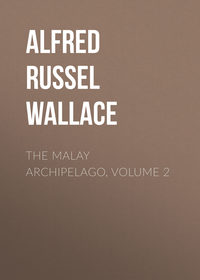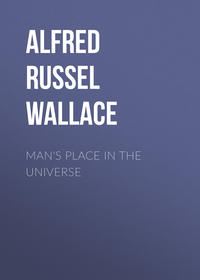 полная версия
полная версияSocial Environment and Moral Progress

Alfred Russel Wallace
Social Environment and Moral Progress
PART I.—HISTORICAL
CHAPTER I
INTRODUCTORY
Before entering on the question of the relation of morality to our existing social environment, it will be advisable to inquire what we mean by moral progress, and what evidence there is that any such progress has occurred in recent times, or even within the period of well-established history.
By morals we mean right conduct, not only in our immediate social relations, but also in our dealings with our fellow citizens and with the whole human race. It is based upon the possession of clear ideals as to what actions are right and what are wrong and the determination of our conduct by a constant reference to those ideals.
The belief was once prevalent, and is still held by many persons, that a knowledge of right and wrong is inherent or instinctive in everyone, and that the immoral person may be justly punished for such wrongdoing as he commits. But that this cannot be wholly, if at all, true is shown by the fact that in different societies and at different periods the standard of right and wrong changes considerably. That which at one time and place is held to be right and proper is, at another time or place, considered to be not only wrong, but one of the greatest of crimes. The most striking example of this change of opinion is that as to slavery, which was held to be quite justifiable by the most highly civilised people of antiquity, and hardly less so by ourselves within the memory of persons still living. The owners of sugar estates in Jamaica cultivated by slaves were not stigmatised as immoral by their relatives in England or by the public at large; and it was the horror excited by the slave-trade in Africa, and in the "middle passage" on the slave ships, rather than by the slavery itself, that so excited public opinion as to lead to the abolition first of the one and then of the other.
We are obliged to conclude, therefore, that what is commonly termed morality is not wholly due to any inherent perception of what is right or wrong conduct, but that it is to some extent and often very largely a matter of convention, varying at different times and places in accordance with the degree and kind of social development which has been attained often under different and even divergent conditions of existence. The actual morality of a community is largely a product of the environment, but it is local and temporary, not permanently affecting the character.
To bring together the evidence in support of this view, to distinguish between what is permanent and inherited and what is superficial and not inherited, and to trace out some of the consequences as regards what we term "morality" is the purpose of the present volume.
CHAPTER II
MORALITY AS BASED UPON CHARACTER
Though much of what we term morality has no absolute sanction in human nature, yet it is to some extent, and perhaps very largely, based upon it. It will be well, therefore, to consider briefly the nature and probable origin of what we term "character"—in individuals, in societies, and especially in those more ancient and more fundamental divisions of mankind which we term "races."
Character may be defined as the aggregate of mental faculties and emotions which constitute personal or national individuality. It is very strongly hereditary, yet it is probably subject to more inherent variation than is the form and structure of the body. The combinations of its constituent elements are so numerous as, in common language, to be termed infinite; and this gives to each person a very distinct individuality, as manifested in speech, in emotional expression, and in action.
The mental faculties which go to form the "character" of each man or woman are very numerous, a large proportion of them being such as are required for the preservation of the individual and of the race, while others are pre-eminently social or ethical. These latter, which impel us to truth, to justice, and to benevolence, when in due proportion to all the other mental faculties, go to form what we distinguish as a good or moral character, and will in most cases result in actions which meet with the general approval of that section of society in which we live; and this approval reacts upon the character so that it often appears to be better than it really is.
So great is the effect of this approval of our fellows that it sometimes leads to behaviour quite different from what it would be if this approval were absent. This is especially the case when the approval leads to wealth or positions of dignity or advantage. Occasionally, in cases of this kind the individual cannot resist his natural impulses, and then acts so as to show his underlying real character. We term such persons hypocrites for making us believe that they were inherently good, instead of being so in appearance only when the good action was profitable to them. Hence in a highly complex state of civilisation it becomes exceedingly difficult correctly to appraise characters as moral or immoral, good or bad; while there is no such difficulty as regards the intellectual and emotional aspects of character, which are less influenced by the general environment, and which there is less temptation to conceal.
All the evidence we possess tends to show that although the actions of most individuals are to a considerable extent determined by their social environment, that does not imply any alteration in their character. Everyone's experience of life, and especially the example of his friends and associates, leads him to repress his passions, regulate his emotions, and in general to use his judgment before acting, so as to secure the esteem of his fellows and greater happiness for himself; and these restraints, becoming habitual, may often give the appearance of an actual change of character till some great temptation or violent passion overcomes the usual restraint and exhibits the real nature, which is usually dormant.
Now it is this inherent and unchangeable character itself that tends to be transmitted to offspring, and this being the case, there can be no progressive improvement in character without some selective agency tending to such improvement. By means of a general discussion of the nature and origin of "Character," I have elsewhere shown that there is no proof of any real advance in it during the whole historical period.1 I show later on what the required selective agency is, and how it will come into action automatically when, and not until, our social system is so reformed as to afford suitable conditions. (See Chapter XVI.)
CHAPTER III
PERMANENCE OF CHARACTER
I will now call attention to a few of the facts which lead to the conclusion as to the stationary condition of general character from the earliest periods of human history, and presumably from the dawn of civilisation. In the earliest records which have come down to us from the past we find ample indications that general ethical conceptions, the accepted standard of morality, and the conduct resulting from these, were in no degree inferior to those which prevail to-day, though in some respects they differed from ours.
As examples of great moral teachers in very early times we have Socrates and Plato, about 400 B.C.; Confucius and Buddha, one or two centuries earlier; Homer, earlier still; the great Indian Epic, the Maha-Bharata, about 1500 B.C. All these afford indications of intellectual and moral character quite equal to our own; while their lower manifestations, as shown by their wars and love of gambling, were no worse than corresponding immoralities to-day.
In the beautiful translation by the late Mr. Romesh Dutt, of such portions of the Maha-Bharata as are best fitted to give English readers a proper conception of the whole work, there is a striking episode entitled "Woman's Love," in which the heroine, a princess, by repeated petitions and reasonings persuades Yama, the god of death, to give back her husband's spirit to the body. It is described in the following verses:
"And the sable King was vanquished, and he turned on her again,And his words fell on Savitri like the cooling summer rain:'Noble woman, speak thy wishes, name thy boon and purpose high,What the pious mortal asketh gods in heaven may not deny!'"'Thou hast,' so Savitri answered, 'granted father's realm and might,To his vain and sightless eyeballs hath restored the blessed light;Grant him that the line of monarchs may not all untimely end,That his kingdom to Satyavan and Savitri's sons descend!'"'Have thy wishes,' answered Yama; 'thy good lord shall live again,He shall live to be a father, and your children, too, shall reign;For a woman's troth endureth longer than the fleeting breath,And a woman's love abideth higher than the doom of death.'"And when at the end of the epic, the kings and warriors welcome each other in the spirit world, we find the following noble conception of the qualities and actions which give them a place there:
"These and other mighty warriors, in the earthly battle slain,By their valour and their virtue walk the bright ethereal plain!They have lost their mortal bodies, crossed the radiant gate of heaven,For to win celestial mansions unto mortals it is given!Let them strive by kindly action, gentle speech, endurance long,Brighter life and holier future unto sons of men belong!"Mr. Dutt informs us that he has not only reproduced, as nearly as possible, the metre of the original, but has aimed at giving us a literal translation. No one can read his beautiful rendering without feeling that the people it describes were our intellectual and moral equals.
The wonderful collection of hymns known as the Vedas is a vast system of religious teaching as pure and lofty as those of the finest portions of the Hebrew scriptures. A few examples from the translation by Sir Monier Monier-Williams will show that its various writers were fully our equals in their conceptions of the universe, and of the Deity, expressed in the finest poetic language. The following is a portion of a hymn to "The Investing Sky":
"The mighty Varuna, who rules above, looks downUpon these worlds, his kingdom, as if close at hand.When men imagine they do aught by stealth, he knows it.No one can stand or walk, or softly glide alongOr hide in dark recess, or lurk in secret cellBut Varuna detects him and his movements spies.* * * *This boundless earth is his,His the vast sky, whose depth no mortal e'er can fathom.Both oceans find a place within his body, yetIn the small pool he lies contained; whoe'er should fleeFar, far beyond the sky would not escape the graspOf Varuna, the king. His messengers descendCountless from his abode—for ever traversingThis world, and scanning with a thousand eyes its inmates.Whate'er exists within this earth, and all within the sky,Yea, all that is beyond King Varuna perceives.May thy destroying snares cast sevenfold round the wicked,Entangle liars, but the truthful spare, O King."The following passage from a "Hymn to Death," shows a perfect confidence in that persistence of the human personality after death, which is still a matter of doubt and discussion to-day:
"To Yama, mighty king, he gifts and homage paid.He was the first of men that died, the first to braveDeath's rapid rushing stream, the first to point the roadTo heaven, and welcome others to that bright abode.No power can rob us of the home thus won by thee.O king, we come; the born must die, must tread the pathThat thou hast trod—the path by which each race of men,In long succession, and our fathers too, have passed.Soul of the dead! depart; fear not to take the road—The ancient road—by which thy ancestors have gone;Ascend to meet the god—to meet thy happy fathers,Who dwell in bliss with him.Return unto thy home, O soul! Thy sin and shameLeave thou behind on earth; assume a shining form—Thy ancient shape—refined and from all taint set free."In this we find many of the essential teachings of the most advanced religious thinkers—the immediate entrance to a higher life, the recognition of friends, the persistence of the human form, and the shining raiment, typical of the loss of earthly taint.
But besides these special deities, we find also the recognition of the one supreme God, as in the following hymn:
"What god shall we adore with sacrifice?Him let us praise, the golden child that roseIn the beginning, who was born the Lord—The one sole lord of all that is—who madeThe earth, and formed the sky, who giveth life,Who giveth strength, whose bidding gods revere,Whose hiding place is immortality,Whose shadow, death; who by his might is kingOf all the breathing, sleeping, waking world—Who governs men and beasts; whose majestyThese snowy hills, this ocean with its rivers,Declare; of whom these spreading regions formThe arms by which the firmament is strong,Earth firmly planted, and the highest heavensSupported, and the clouds that fill the airDistributed and measured out; to whomBoth earth and heaven, established by his will,Look up with trembling mind; in whom revealedThe rising sun shines forth above the world."If we make allowance for the very limited knowledge of Nature at this early period, we must admit that the mind which conceived and expressed in appropriate language, such ideas as are everywhere apparent in these Vedic hymns, could not have been in any way inferior to those of the best of our religious teachers and poets—to our Miltons and our Tennysons.
CHAPTER IV
PERMANENCE OF HIGH INTELLECT
Accompanying this fine literature and moral teaching in Ancient India was a civilisation equal to that of early classical races, in grand temples, forts and palaces, weapons and implements, jewelry and exquisite fabrics. Their architecture was highly decorative and peculiar, and has continued to quite recent times. Owing perhaps to the tropical or sub-tropical climate, with marked wet and dry seasons, the oldest buildings that have survived, even as ruins, are less ancient than those of Greece or Rome—but those corresponding in age to the period of our Gothic cathedrals are immensely numerous, and show an originality of design, a wealth of ornament, and a perfection of workmanship equal to those of any other buildings in the world.
Two other great civilisations of which we have authentic records are those of Egypt and Mesopotamia, both of which appear to have been much older than those of India or Greece. But whereas Egypt has left us the most continuous series of tombs, temples, and palaces in the world, abundant works of art in statues and sculptures, together with characteristic reliefs and wall paintings, showing the whole public and domestic life of the people, Mesopotamia is represented only by vast masses of ruins on the sites of the ancient cities of Nineveh and Babylon, from which have been disinterred many fine statues and reliefs, exhibiting a very distinct style of art. For more than 2,000 years the history and remains of this once greatest of civilisations was absolutely unknown, except by a few doubtful facts and names in Greek and Hebrew writings. But during the latter half of the nineteenth century a band of explorers and students, such as Layard and Rawlinson, made known, first the works of art, and, latterly, an enormous quantity of small bricks and stone slabs, thickly covered with a peculiar kind of writing known as the cuneiform inscriptions, which, after an enormous amount of labour, have at length been translated. Whole libraries of these brick-books have been discovered, and as the reading and translating goes on, we obtain a knowledge of the history, laws, customs, and daily life of this ancient people almost equal to that we now possess of the ancient Indians and Egyptians.
For our present purpose, however, Egyptian civilisation is the most important, because it presents us with the most definite proof of the attainment of a high degree of what is specially scientific attainment at the very dawn of historical knowledge. This is well exhibited by that most wonderful work of constructive art—the Great Pyramid of Gizeh—which, though not quite the earliest, is the largest and most remarkable of about seventy pyramids in various parts of Egypt, and has been more thoroughly explored and studied, both as to its proportions, construction and uses, than any of the others.
This pyramid is known historically to have been built by the order of King Cheops (or Khufu), and the date of its design and erection can be pretty accurately fixed as about 3700 B.C., or nearly 2,000 years earlier than that of the civilisation depicted in the Indian and Greek epics. The internal structure of this pyramid is its most interesting feature, because it shows clearly that it was designed to be not only the tomb of the king who built it, but also a true astronomical observatory during his life. This has been denied by some modern historians. In Harmsworth's History of the World (p. 2034) it is said: "For the pyramids are nothing but tombs. They have no astronomical meaning or intention whatever." And then, after referring to the ideas of Piazzi Smyth and others as "vain imaginings," it is added: "There is nothing marvellous about these great tombs, except their size and the accuracy of their building." An almost exactly similar statement is made in the great Historian's History of the World, and in "Chambers's Encyclopædia."
If the writers of these histories had read Mr. R. A. Proctor's book, The Great Pyramid: Observatory, Tomb and Temple, they would have known that this statement is entirely erroneous. The size, shape, and angles of the internal passages have been described and measured by many competent students, among the most careful and exact of whom was Piazzi Smyth, then Astronomer Royal of Scotland. It is true he had many "vain imaginings," but his measurements were among the most trustworthy. The "pyramid religion," which he helped to establish by a series of "coincidences" in the dimensions of various parts of the pyramid with astronomical dimensions, of which the pyramid builders could have had no knowledge whatever (such as the distance of the sun, the precession of the equinoxes, etc.), was no doubt a "vain imagining," but he frankly claimed it as a divine inspiration. All these are rejected by Mr. Proctor, who clearly explains the purpose of the greater part of the internal structure as only an experienced practical astronomer could do. I will now state as briefly as possible what are the well-established facts, as well as the conclusions at which Mr. Proctor arrives.
The Great Pyramid and the two smaller ones near it, forming the pyramids of Gizeh, are placed on a small rocky plateau near the apex of the delta of the Nile. The largest of these is situated so that its northern face rises from the very edge of this plateau. The reason of this seems to have been that the builders wished to place it as nearly as possible on the 30th parallel of latitude. It is really about a mile and a third south of that parallel, and it is shown that such an error is a small one for that early period, and would matter but very little for the purpose required. The next feature is that it is truly oriented; that is, the four sides run north and south, east and west. It is also a true square, the four sides being of equal length, and the four corners are on a truly level plane.
The first thing the builders had to do was to get a true meridian line, and they could have done this in two ways—by observations of the sun or of the pole star, the latter being much the more accurate, though more laborious and costly. At the time the pyramid was built the pole star was Alpha Draconis, which was farther from the pole than our pole star and revolved around the true pole in a circle of 7° 24′ in diameter. In order to observe the direction of this star at its lowest point, the builders excavated in the solid rock a tunnel about 4 feet in diameter, so as to keep this star visible each day at the lowest point of its circuit. This tunnel extended 350 feet through the rock to a point nearly under the centre of the pyramid, where, by a small vertical boring, a plumb-line could have been dropped so as to obtain the exact line of the meridian on the surface, and afterwards on each successive step of the pyramid as it was built up. While the building went on the sloping tunnel was continued backwards to its northern face; and a tunnel ascending to the south was formed of the same size and making the same angle with the horizon. This had puzzled all previous explorers of the pyramid till Mr. Proctor showed that, by stopping up the downward passage at the angle and filling the hollow with water the pole star could be observed by reflexion and thus give the exact direction of the meridian on the upper surface of the pyramid with extreme accuracy, as it was built up slowly year by year.
But at a distance of 127 feet a new feature appears. The ascending tunnel is changed into what is called the Great Gallery, which, while continuing exactly the same floor line as the tunnel, is suddenly raised to a height of 28 feet, with a width of 7 feet on the floor and 3½ feet at the top. Along each side there is a ledge or seat, 20 inches broad and 21 inches high. The sides do not slope inwards, but are formed of seven courses of stone, each one overlapping the one below by about 3 inches. The whole of this gallery, or inclined corridor, is formed of limestone beautifully smooth, or even polished. The length of this gallery is 156 feet, and its floor terminated at the platform of the pyramid, upon the central line from east to west, when it had reached two-thirds of its total height. This is on the level of the King's Chamber; and it was probably only after the king was dead and his body embalmed and placed in his sarcophagus that the pyramid was completed, the openings of the passages carefully closed up, and the whole exterior covered with a smooth casing of stone, very small portions of which now remain. There are two other features of this gallery which have puzzled the merely antiquarian explorers. These are square holes cut in the sloping benches close to the side walls, and about 5½ feet apart, there being eighteen on each side exactly opposite each other. On each side of the gallery, about half-way up, is a longitudinal groove, which would serve to carry transverse screens which could be slid up or down, and easily wedged in position in order to mark exactly the central line, like the cross hairs in an astronomical telescope. The holes on the benches would serve to carry cross seats on which the observer could be firmly and comfortably seated while observing a transit of sun, star, or planet.
Being open to the south, the Great Gallery would give a magnificent view of the southern sky, and enable observers to determine the altitudes and azimuths of many stars, and of the superior planets Mars, Jupiter and Saturn. The star Alpha Centauri, which was at that period of the first magnitude though now much diminished in brightness, would, when crossing the meridian, have been situated about the centre of the field of view as seen from this remarkable feature of the pyramid which, Mr. Proctor considers, was the finest transit-instrument ever constructed for naked-eye observations. Tycho Brahé, with his celebrated Quadrant at Uranienburg, did not attain such a degree of accuracy as did these Eastern astronomers nearly 6,000 years ago. One great superiority of the subterranean observatory over any open-air observations that can be made without telescopes is, that by closing up the end, except for the small aperture required to see the object, the brighter stars could be well observed in the daytime.
When we remember that the Great Pyramid covers 13½ acres of ground, that it is truly square and on a truly horizontal base, that each side is accurately directed to a point of the compass, that the angle of its slope is such that the area of each of the four triangular faces is equal to that of a square whose sides are equal to the height of the pyramid; and, further, that the slope of the long descending tunnel is precisely such as to point accurately to the pole star of the epoch at the lowest part of its circuit round the true pole; and, lastly, that all this could only be done, as accurately as it has been done, by the system of subterranean tunnels and galleries that actually exists, while almost all the details of their construction are shown to be adapted for astronomical observations of the nature required, the conclusion becomes irresistible that they were designed and used for such observations, and that by no other means could the same amount of accuracy have been attained.









